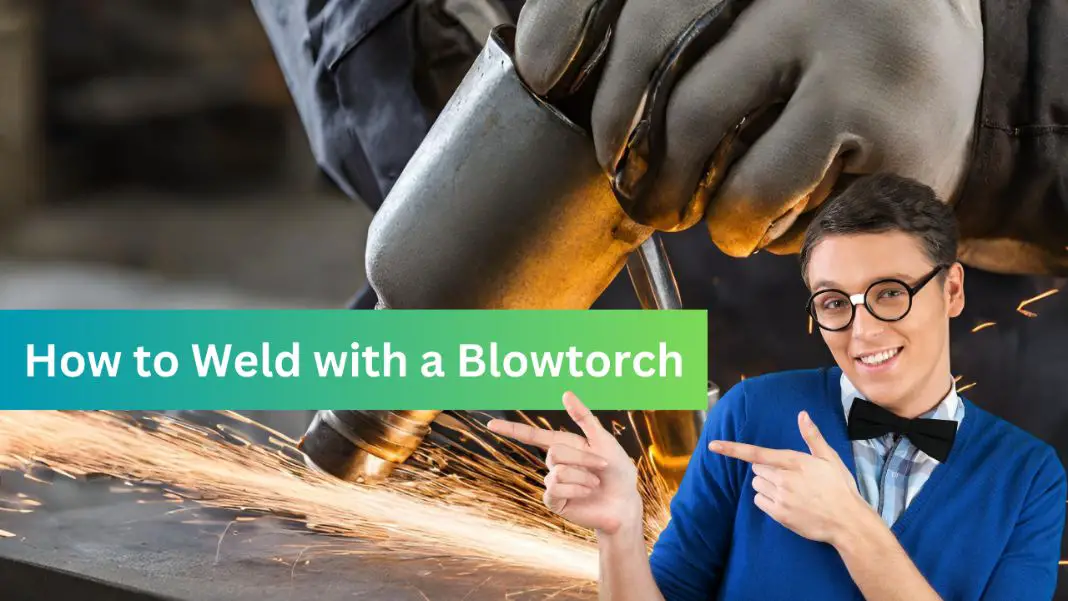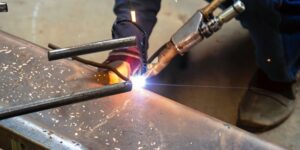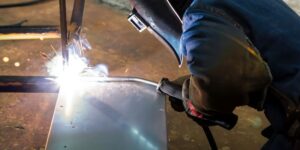Table of Contents
- How to Weld with a Blowtorch
- 2. Safety Measures
- 3. Choosing the Right Blowtorch
- 4. Setting Up the Office
- Ventilation
- 5. Choosing Appropriate Materials
- 6. Configuring the Blowtorch
- 7. A Spark for the Blowtorch
- 8. Welding Methodologies
- 9. Joining Light Metals
- 10. Joining Dense Metals
- 11. Maintenance and Cleaning
- 12. Typical Errors to Prevent
- 13. Benefits of Using a Blowtorch for Welding
- 14. Advice for Newbies
- How to Weld Steel with a Blowtorch
- How to Use a Propane Torch for Welding
- How to Use a Gas Torch to Weld Aluminum
- Can Propane Be Used Alone to Weld?
- Conclusion
- Unique FAQs about How to Weld with a Blowtorch
Metal can be joined together in a variety of useful and efficient ways with blowtorch welding. It can be useful for a variety of jobs to know How to Weld with a Blowtorch, whether you’re a professional or a do-it-yourself enthusiast.
We’ll walk you through every step of the procedure in this tutorial, from safety measures to sophisticated methods. Now that you have your protective gear on, let’s explore the world of blowtorch welding.
How to Weld with a Blowtorch
Welding with a blowtorch involves several key steps. Let’s break it down:
Melting and joining metal components together with extreme heat is the process of blow torch welding. It’s an adaptable technique that may be applied to fabrications, restorations, and creative works.
-
Recognizing the Fundamentals
It’s crucial to comprehend the fundamentals of welding before you begin, including heat management, metal compatibility, and the various kinds of blowtorches that are available.
2. Safety Measures
When using a blowtorch, safety must always come first. Safety should always come first to avoid mishaps and injury.
-
Individual Protection Gear
Put on the proper protective gear, such as gloves, a welding helmet, and flame-resistant clothes.
3. Choosing the Right Blowtorch
Selecting the right blowtorch is crucial for successful welding. Different types are suitable for various tasks.
-
Categories of Torches
Find more about the uses of common blowtorches, such as propane and oxy-acetylene torches.
4. Setting Up the Office
To maximize productivity and safety, make sure your workplace is ready before you begin welding.
-
Ventilation
Proper ventilation is crucial to disperse harmful fumes and gases.
5. Choosing Appropriate Materials
Selecting the appropriate welding materials is essential for a project’s success. Make sure the metals you want to join are compatible.
-
Compatibility with Metals
Find out which metals are suitable for welding and which ones are not.
6. Configuring the Blowtorch
After arranging your workspace and supplies, it’s time to set up the blowtorch.
-
Flame and Gas Configurations
For the greatest welding outcomes, learn how to adjust the flame and gas flow.
7. A Spark for the Blowtorch
You must test-run the blowtorch and ignite it safely before you begin welding.
-
Process of Ignition
A step-by-step instruction will help you ignite your blowtorch safely.
8. Welding Methodologies
There are several techniques used in welding, and each is appropriate for a particular task.
-
Fundamental Welding Methods
Acquire fundamental skills such as lap and butt welding.
9. Joining Light Metals
Thin metal welding calls for dexterity and particular techniques.
-
Advice on Welding Thin Metal
Learn methods and advice for distortion-free welding of thin materials.
10. Joining Dense Metals
You’ll need to modify your method and settings for heavier metals.
-
Fusion Welding Dense Material
Discover how to handle challenging welding projects.
11. Maintenance and Cleaning
Maintaining the best possible condition for your blowtorch requires routine maintenance.
-
Cleaning and Care
Observe the maintenance guidelines to increase the blowtorch’s longevity.
12. Typical Errors to Prevent
Using a blowtorch to weld can be challenging, and there are some typical mistakes to avoid.
-
Common Errors to Avoid
Recognize and steer clear of hazards that could jeopardize the quality of your welds.
13. Benefits of Using a Blowtorch for Welding
Examine the benefits of utilizing a blowtorch for welding in contrast to alternative techniques.
-
Advantages
Learn about the advantages of accuracy and adaptability.
14. Advice for Newbies
These pointers will help you begin blowtorch welding safely and successfully if you’ve never done it before.
-
Getting Started
Learn the basics and gain confidence in your welding skills.
How to Weld Steel with a Blowtorch
To weld steel with a blowtorch, you’ll need the following materials and safety equipment:
- Steel pieces to be joined
- A blowtorch
- Welding rods suitable for steel
- Safety goggles and gloves
Follow these steps:
2. Prepare the steel surfaces by cleaning them before welding. Make sure there are no pollutants, paint, or corrosion on them. A robust weld requires careful preparation.
2. Configuring the Blowtorch: Attach the blowtorch to your welding rod. For improved weld quality, adjust the flame to provide a neutral, non-oxidizing flame.
3. Welding: Apply the welding rod to the steel surfaces once they are red hot in order to form a bead between them. Once the joint is finished, move the flame and rod along it.
4. Cooling: To avoid tension and weld cracking, let the welded region cool gradually.
How to Use a Propane Torch for Welding
Using a blowtorch and a propane torch for welding is very similar. The same supplies and safety gear as previously indicated are required.
- Preparation: In order to attach surfaces, they must be cleaned and ready.
- The second step in setting up a propane torch is to attach your welding rod to it and control the flame so that it is neutral and does not oxidize.
- Welding: To form a weld bead, heat the workpiece and apply the welding rod.
- Cooling: Give the weld time to cool down.
How to Use a Gas Torch to Weld Aluminum
Certain additional considerations need to be made when using a gas torch to weld aluminum:
Because aluminum has distinct characteristics from steel, you will need aluminum welding rods.
Make sure you carefully clean the surfaces made of aluminum.
Since aluminum conducts heat well, a higher heat source is required than steel.
The same procedures as for steel should be followed, but keep in mind that aluminum has different heat needs and that it is more likely to create an oxide layer, Refining your technique is key to ensuring a high-quality weld.
Can Propane Be Used Alone to Weld?
Propane alone can be used for welding however it might not be the best option for all metals. Because propane has a lower flame temperature than certain other gases, it may not work as well on metals like aluminum that are thicker or more heat-conductive. Use a special welding gas, such as acetylene, for more adaptable welding.
video by G.Lapira (DIYer)
Conclusion
In conclusion, using a blowtorch for welding is an invaluable technique that can be applied to both professional and do-it-yourself operations. You may create strong, long-lasting welds by using the proper tools, safety procedures, and techniques.
Unique FAQs about How to Weld with a Blowtorch
Is it appropriate for beginners to weld using a blow torch?
Absolutely, novices may become proficient in blowtorch welding with the correct instruction and practice.
How much does a basic blowtorch setup cost?
Although the price may vary, a simple setup may begin at approximately $100.
Is it possible to fuse various metal types together?
Yes, you can weld different types of metal together if you use the right technique and compatible metals.
How can I choose the right flame setting?
The thickness of the metal and your particular welding process will determine the flame setting. Experimentation and practice are crucial.
What safety measures are essential while using a blowtorch for welding?
Always wear safety gear, operate in an area with good ventilation, and keep a fire extinguisher nearby in case of emergency.





1 thought on “How to Weld with a Blowtorch: A Comprehensive Guide”